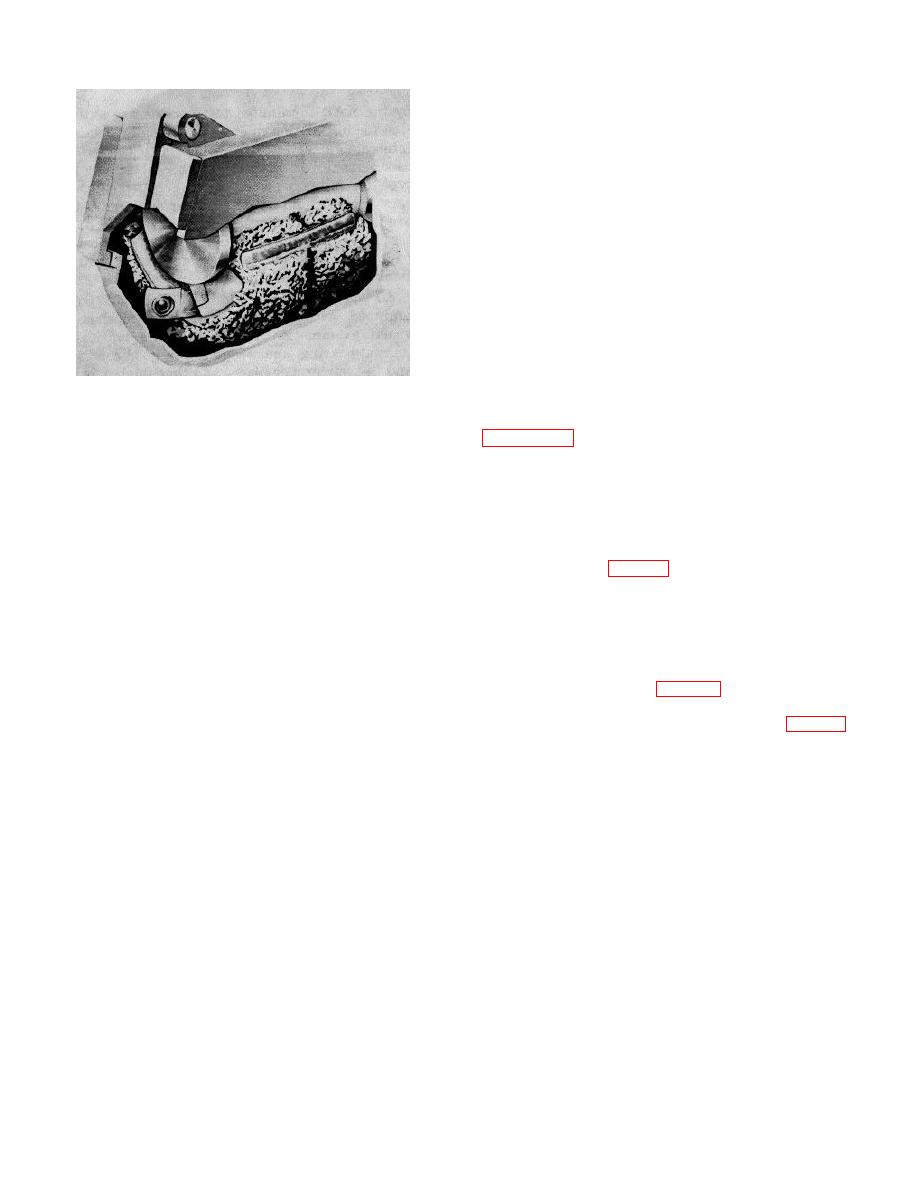
TM 55-203
4-16. Packing Journal Boxes (Waste)
a. All reclaimable packing removed from journal
boxes should be pulled directly into containers, avoiding
contact with the ground or any other place where it may
pick up dirt. Large, loose pieces of lining, grease, or
foreign matter should be removed. The packing should
then be taken promptly to the waste plant or the central
shipping point. It should be kept under cover to protect
it from weather, dust, or dirt, and to exclude water.
Removed packing must not be reused until it has been
renovated. When reclaimed packing is insufficient for
requirements, new waste should be added and
thoroughly blended to form a uniform mixture.
b. Back rolls consisting of light-twisted prepared
packing with ends turned under, or of suitable size to fill
the space between the journal and the journal box,
Figure 4-27. Typical lubricator pad.
should be inserted and worked back under the journal to
the extreme back of the box as shown in the top row of
thorough saturation of the threads. To remove the
excess oil, it should be drained on a rack until the
diameter of the journal, and the ends must be
packing is resilient or elastic. Oil should not drip from
approximately 1 Inch below the centerline of the journal.
drained packing when lifted from the drain rack, but oil
The roll must be well up against the journal so as to
should flow from drained packing squeezed in the hand.
properly lubricate the journal fillet and to keep out dust
and dirt Rolls tied with twine should not be used.
c. When prepared packing is shipped, drums or
containers capable of excluding water, dust, and foreign
c. Sufficient packing is applied in one piece (B, fig 4-
matter should be used. When such containers are used
26) or in rolls (A, fig 4-26) to firmly fill the space under
for return shipments of old packing, they should be
the journal and to bear evenly along the length of the
thoroughly cleaned before being refilled.
journal to prevent settling away. Care must be taken to
have the 'packing bear evenly along the full length of
d. Prepared packing stored in shipping containers
the lower side of the journal. Boxes equipped with a
awaiting use should be protected with tight-fitting lids to
spring-type packing retainer device must have packing
prevent contamination.
at front, finished off, straight down from the inside face
e.
Prepared packing in tanks, vats, or other
of the journal collar (C, fig 4-26) Boxes not equipped
with a packing retainer device must have packing at the
containers should be turned over or the accumulated oil
front finished off on a downward Incline (C-I, fig 4- 26).
in the bottom drawn off and poured over the top at least
once in each 4 hours during working hours.
d. For the one-piece or bulk method, after the back
roll has been applied, with the packing bucket directly
4-15. Preparation for Packing Journal Boxes
under the box, the packing is placed across the full
a. Before packing a journal box, the interior, including
width of the mouth of the journal box and the strands
the journal, bearing, and wedge, must be thoroughly
allowed to hang outside. More packing must always be
cleaned. The front of the box, which may come in
added before the hanging strands are placed inside the
contact with the packing being applied, and the inside of
box This has the effect of binding all of the body of the
the lid must also be cleaned.
packing together The top of the packing along the sides
must be approximately 1 inch below the centerline of the
b. When applying new boxes or reapplying boxes, the
journal.
dust-guard well should also be cleaned as above.
c. Boxes should be inspected for cracks which might
cause oil leakage.
d. Journal box rear seals or close-fitting dust guards,
dust-guard plugs, and box lids complying with
specifications should be applied.
4-23



 Previous Page
Previous Page
